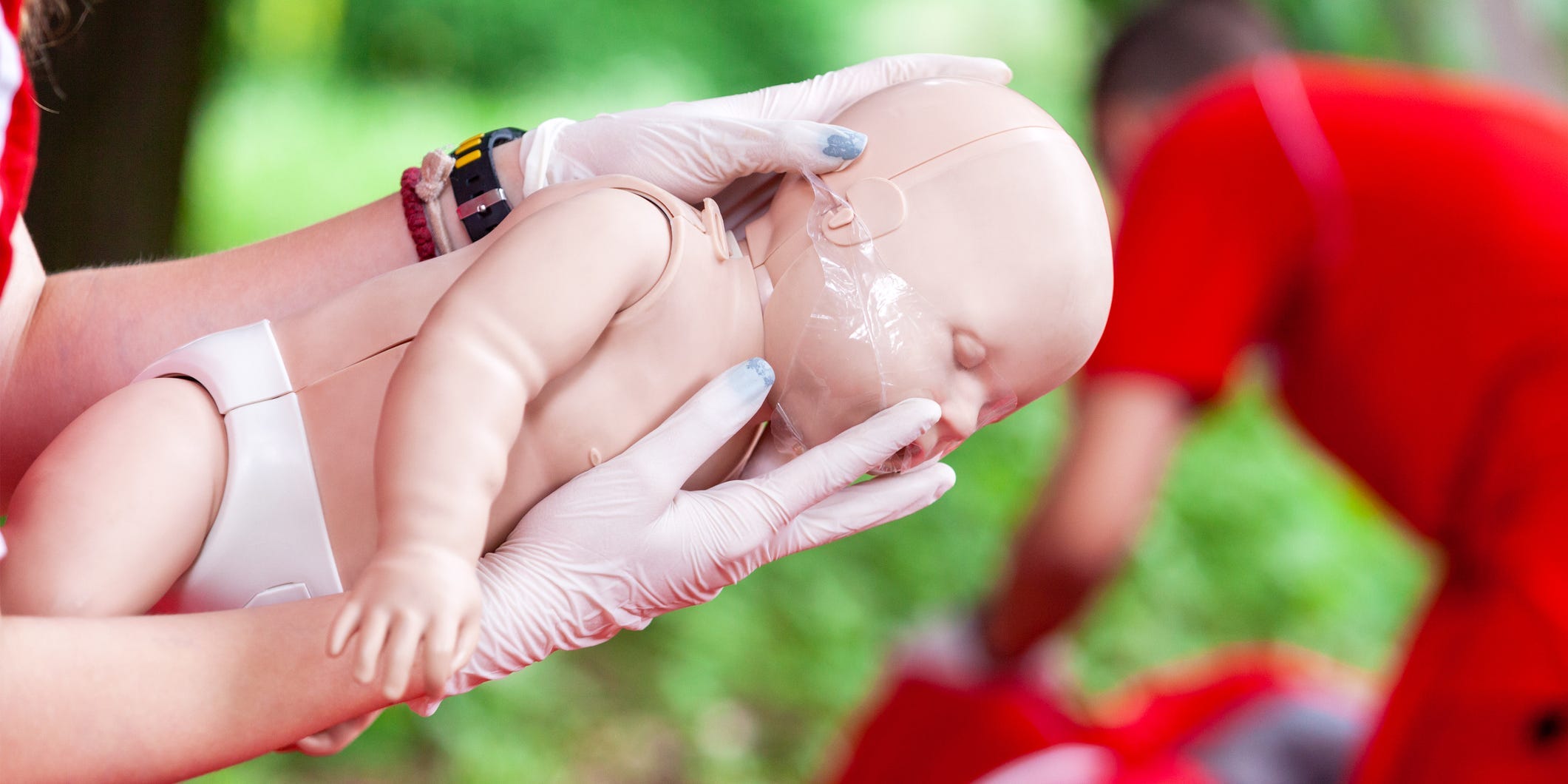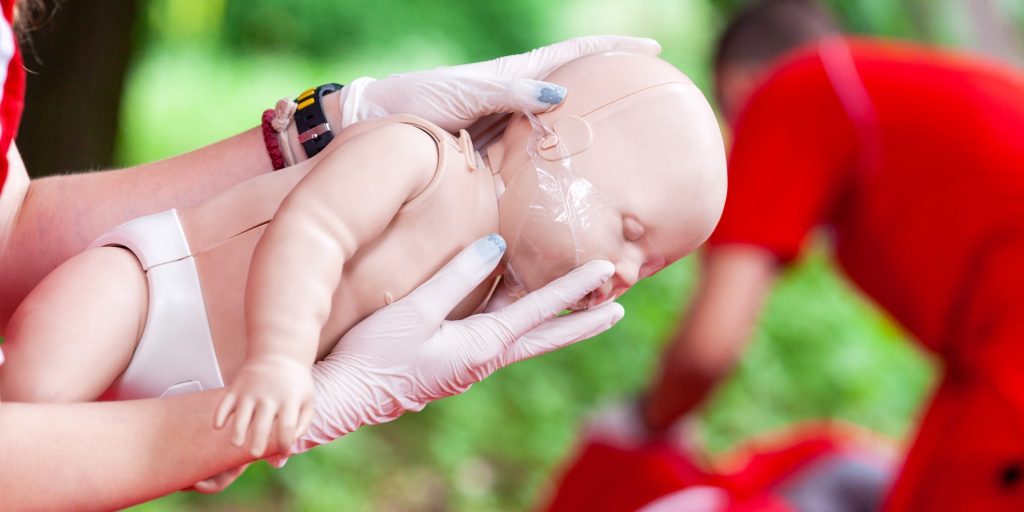
Mihajlo Maricic / EyeEm/ Getty Images
- A breech birth happens when a baby does not emerge through the vagina head-first.
- Turning a breech baby is usually done at around 36 or 37 weeks and before the mother's water breaks.
- If a baby can't be oriented correctly before or during labor, you might need a C-section delivery.
- Visit Insider's Health Reference library for more advice.
A breech vaginal birth is when a woman gives birth to a baby that does not emerge through the vagina head-first. Instead, they'll emerge either feet or buttocks-first.
This can be dangerous because it means the baby's head could get caught in the birth canal and result in asphyxia. Around 4% of pregnancies at full term end up with the fetus in breech presentation in the mother's uterus.
A doctor should check whether a baby is oriented the right way for birth during the last few weeks of pregnancy, at around 36 weeks. Luckily, if the baby is not in a head-down position, there are ways to try and turn the baby before birth.
But if the baby can not be turned, then a C-section is an option to avoid the risks of a breech vaginal birth. Here's what you need to know about breech presentation and birth.
Confirming a breech presentation
The first is to feel for the position of the baby by locating the baby's head, buttocks, and feet through the mother's belly. Ultrasound is often used for confirmation.
"Of the two methods, using the ultrasound is the most accurate way to see the baby's position since feeling for the baby's position can be influenced by the mother's weight, especially in the belly area, which can make it harder to feel the baby," says Dr. Véronique Taché, an associate professor of maternal-fetal medicine at the University of California, Davis.
If your baby is breech at full-term, Taché says it likely isn't cause for alarm. All else considered, the breech position will not threaten the health of the fetus and, "most babies who are breech presentation are normal," after birth, says Taché.
Turning a breech baby before birth
If both mother and baby are healthy, doctors will attempt to use their hands to put pressure on the abdomen to rotate a breech-positioned baby. This procedure is what's called an external cephalic version (ECV) and about half of these procedures are successful in properly reorienting the baby.
If an ECV doesn't work, some practitioners have found that using acupuncture and moxibustion could help reorient the fetus in the right direction. Moxibustion is a Chinese medicine therapy, where an herb or combination of herbs is burned near an acupuncture point - in this case at the little toe. That said, further research is needed in this procedure to determine just how successful this procedure is.
If the baby is still breech by the time labor contractions start, you should consult with your obstetrician about delivery via C-section. While some women are able to deliver breech babies naturally, it is usually safer to deliver via C-section. Moreover, babies who are born in the breech position are at a higher risk of temporary hip instability after birth.
Turning a breech baby during labor
Turning a breech baby is typically done at around 36 or 37 weeks and before the mother's water breaks. However, sometimes a baby will go into breech too close to labor.
In that case, it's usually too risky to safely turn them before birth. A doctor can try and reorient the baby during labor, or more likely the woman will either deliver via C-section or less likely, give birth with the baby in the breech position.
There may also be a case when delivering twins. According to the Mayo Clinic, if the baby that's positioned to come out first is in the head-down position, your doctor may choose to deliver the first baby vaginally and then turn the other by applying pressure to the abdomen, which may allow for a vaginal birth of the second baby as well.
3 types of breech presentation
According to the University of Wisconsin, Madison School of Medicine and Public Health, there are three types of breech presentation:
- Complete breech: The baby's feet are near their buttocks, which are down near the birth canal, and its knees are bent.
- Footling breech: This is a feet-first position in which one or both legs sit below the buttocks in the womb.
- Frank breech: This is the buttocks-first position and the most common breech presentation. The legs are straight up in front of the body, the feet are near the head, and the buttocks are closest to the birth canal.
Babies may also be lying sideways, called a transverse presentation, with the head and feet pointing towards the right and left sides of the mother's abdomen. In twins or other multiple births, one baby may be breech while the other is head-down.
When it comes to turning the baby, it's no easier to turn a complete breech than it is to turn a frank breech. If you're undergoing an ECV, doctors will often give you an injection to relax your uterus, since it's easier to turn a fetus in a more relaxed uterus.
According to Taché, the factors that could contribute to a breech birth include:
- Shape of the mother's womb
- Abnormalities such as uterine fibroids
- The age of the baby at delivery since premature babies are more likely to be breech
- The amount of amniotic fluid around the baby
- Whether or not there is more than one baby in the womb
Insider's takeaway
A breech birth can be a dangerous complication where the baby is not oriented the right way in the womb so that it does not emerge from the birth canal head-first, which can cause asphyxiation during birth.
A doctor can try to turn a breech birth either before or during labor. However, if this is unsuccessful, a doctor will order a C-section delivery.
While breech births are not common - affecting about 4% of pregnancies - they can be fatal for the baby and therefore are taken very seriously.
Dit artikel is oorspronkelijk verschenen op z24.nl
